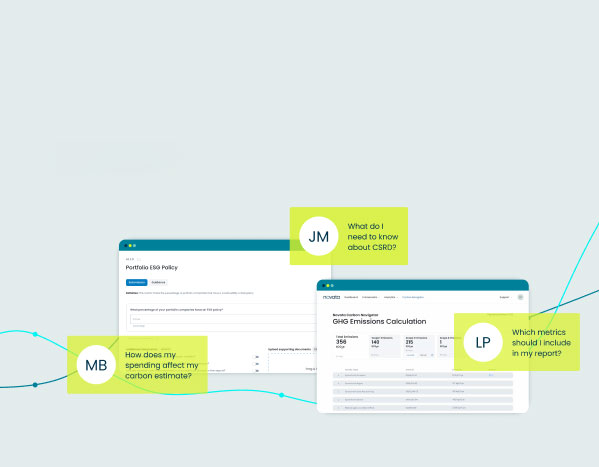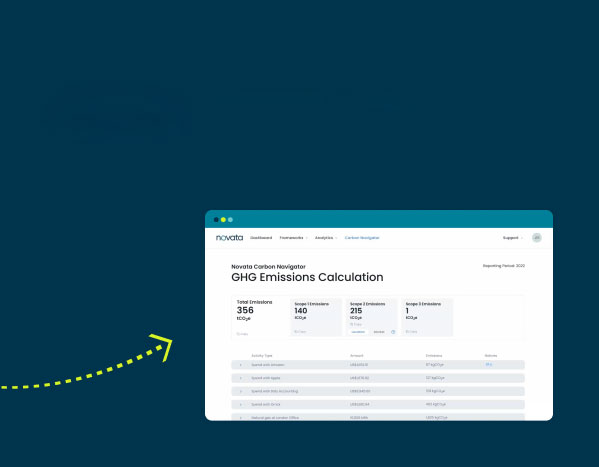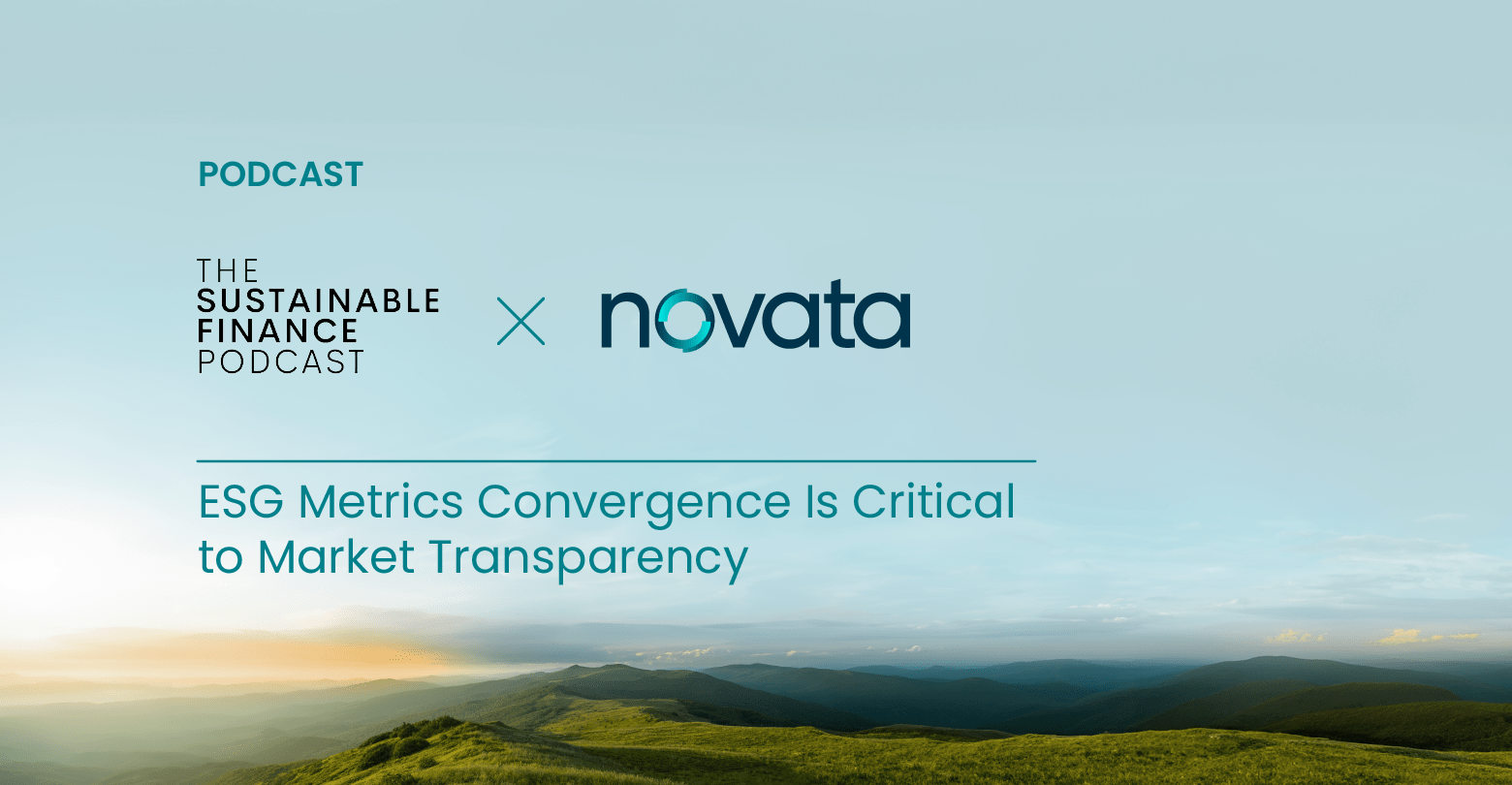In this episode, Mark Fischel, Head of Product at Novata, explores the intricacies of science-based targets (SBTs), which are rooted in the Paris Agreement’s goals to limit global warming. Listen as he delves into the origins of science-based targets and explains how SBTs translate global climate ambitions into actionable business strategies.
About Sustainable Intelligence
Sustainable Intelligence is an interview series from Novata that explores ESG and sustainability in the private markets. From carbon accounting to using data to create value, the series dives into the challenges and opportunities facing private market investors and company leaders as their integrate ESG across the business and respond to regulatory requirements. Each episode centers authentic dialogue, highlighting experts at the forefront of advancing ESG data collection and driving meaningful progress in the sustainability landscape. Listen to more episodes.
Conversation with Mark Fischel (Transcript)
Ella: Welcome to Sustainable Intelligence, where we discuss all things, ESG and sustainability for the Private Markets. Brought to you by Novata. I’m Ella Williamson and I’m thrilled to be your host.
Joining us today is Mark Fischel, Head of Carbon at Novata who formally started his own business in the world of carbon accounting. Together, we’ll unpack the intricacies of science-based targets So let’s jump in. First off. What’s the deal with setting a science-based target? What’s the reasoning behind it?
Mark: Great. Thank you. So this all comes back to the Paris agreements back in 2015. Where all of the countries in the world agreed together that they wanted to limit global warming. To well below two degrees versus pre-industrial levels. And ideally 1.5 degrees. The reason for that is well-known by all. By limiting global warming to 1.5 degrees, we can avoid the worst effects of floods, fires, coral bleaching, et cetera. All of these will be a lot worse if we reach two or exceed two degrees than keeping global warming to 1.5 degrees. So we basically, we need to get our act together and reduce emissions as quickly as we can because greenhouse gasses can stay around in the environment for well over a hundred years.
So the science-based targets really takes the spirit of Paris and translates that into business and commercial language. As a company, what do I need to do to ensure that I am in alignment with the Paris agreement to 2015? and that essentially is what setting a science-based target in line with a science-based target initiative actually helps you to do is to understand as a business, what you need to do and ultimately. To simplify it. If It comes down to reducing your emissions by 50% by 2030, and then virtually by a hundred percent by your net zero target date, probably 2050.
Ella: Great. So it sounds like it’s really about fulfilling corporate social responsibility. Moving on slightly. What exactly is a science-based target and what’s the low down on SBTi. Has there been any exciting news or industry developments recently?
Mark: Yes. So the SBTi stands for the science-based targets initiative, which is essentially the nonprofit body that organizes this target set science-based targets, setting exercise by businesses. Now the SBTi has seen incredible growth over the last several years, over 4,000 businesses are now listed as having set a science-based target, including some of the world’s biggest and also some small companies. The SBT, that means that the science-based targets initiative has huge influence over the corporate sustainability landscape. As just one example of that, their position on the usability of carbon credits as part of that science-based target has actually had an enormous impact on the growth of that industry as a whole. So it’s a hugely important institution and it has been in the news recently.
In fact, only last week. So we’re in March, 2024 for anyone listening in the future. The science-based targets had to remove hundreds of businesses from their validated list of companies having set targets. The reason for that is that those companies that set a science-based target in the rush to set these targets a few years ago, have realized a few years on that actually there’s a lot of challenges and difficulties associated with actually achieving and obtaining that target. In particular, the most important reason that they cited those companies when pulling out was that they’re really struggling to engage their suppliers and get their suppliers to help them hit that science-based target.
Ella: Fascinating. Yeah. I think that part about scope three emissions and actually engaging your suppliers to report on those is the piece that people tend to be struggling with.
So if we shift gears slightly, how do you even go about setting a target? And what’s the nitty gritty of the process?
Mark: Yeah, absolutely. So ultimately it actually isn’t that difficult. The idea behind setting the targets is: without too much lift as a company, you can set a target and show your commitment. And then the hard work starts to actually go off and actually work out well, how am I going to actually achieve that target? So it isn’t that complicated.
But, in terms of a practical guide, If you’re a company of below 250 FTEs. So you’re an SME then there’s a streamlined option for you that removes some of the stages, but for companies above 250 FTEs, it comes down to five stages. Stage one: commit. So you submit a letter where you set out your intent to set a science-based target, committing to set a commitment. If you like.
Then stage two is develop. So you use all of the SBTi’s documents and criteria to work out what your target needs to be, depending on what industry you’re in. And then stage three, you submit to send this to the SBTi. And you go through the validation process. Stage four, you communicate. So once that target has been validated, you can actually announce your target and share it with stakeholders. And then finally stage five: disclose. So once you set a target, you have to report on it every single year to the SBT to ensure that you are actually on track to hit that target.
Ella: Great. And picking up on the point you made earlier. Then, the sixth part of that is, that continual improvement of your strategy, right? So what I’d love to know about is what are those real hurdles and challenges when it comes to setting those targets?
Mark: You don’t necessarily have to know every single piece around how you’re actually going to decarbonize, especially if some of that relies on factors outside your control, whether that’s your suppliers or technological advancements. But I think one thing you really do need before you can set the target is you need to have a really good understanding of what your missions are.
So where are you today? In fact, all of the targets are set based on your emissions baseline. So on the emissions measurement that you’ve actually set out initially. So without having measured the high quality GHG footprint, you really aren’t in a good place to set a target again, it’s that initial footprint.
Ella: Great. So it’s all about looking at where you are today and then planning a path for the future of de-carbonization.
Mark: Exactly.
Ella: Well, thank you so much, Mark. That’s a wrap for today’s episodes. Until next time. Let’s keep building sustainable intelligence together. Find out more at Novata.com






